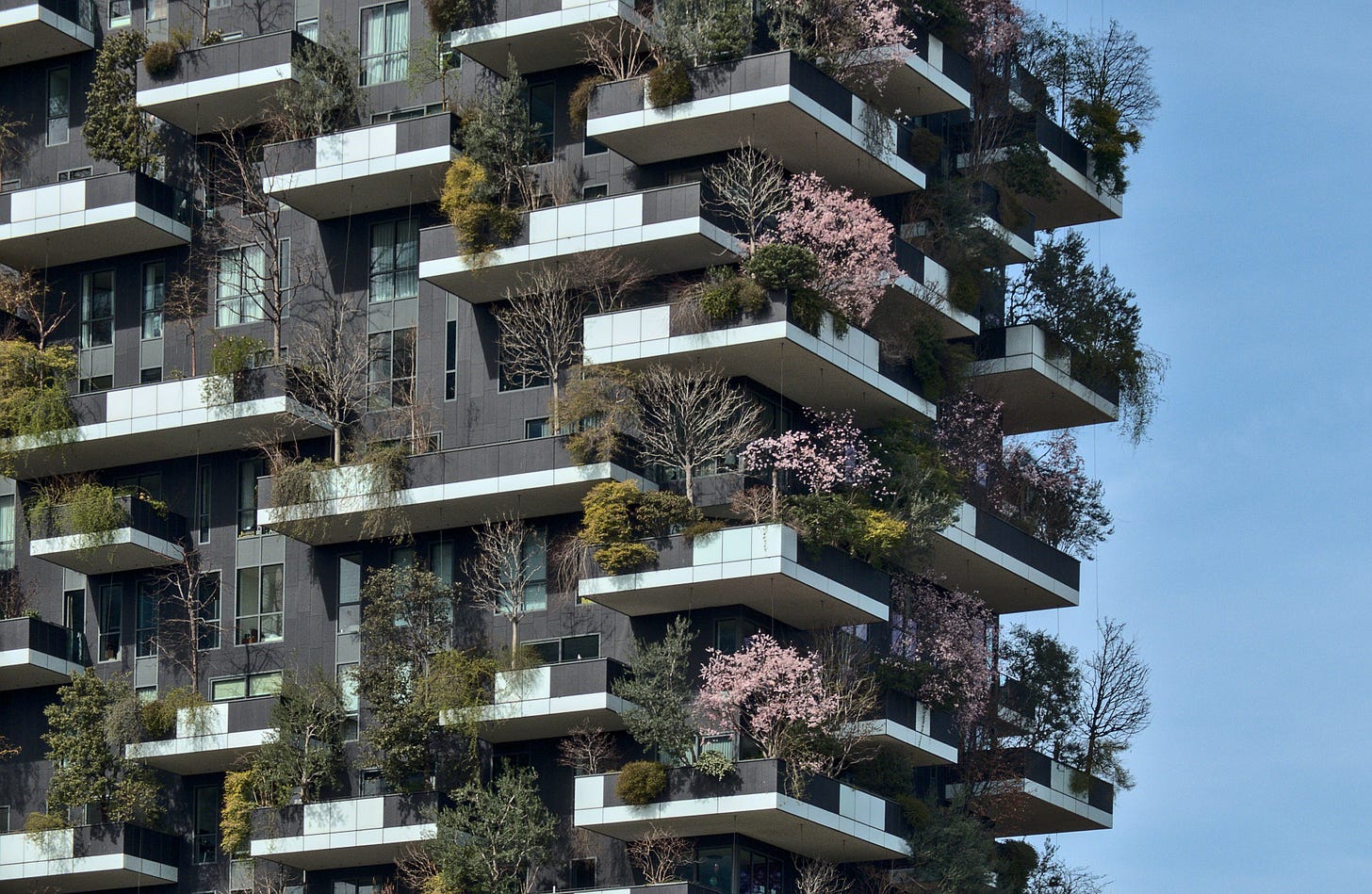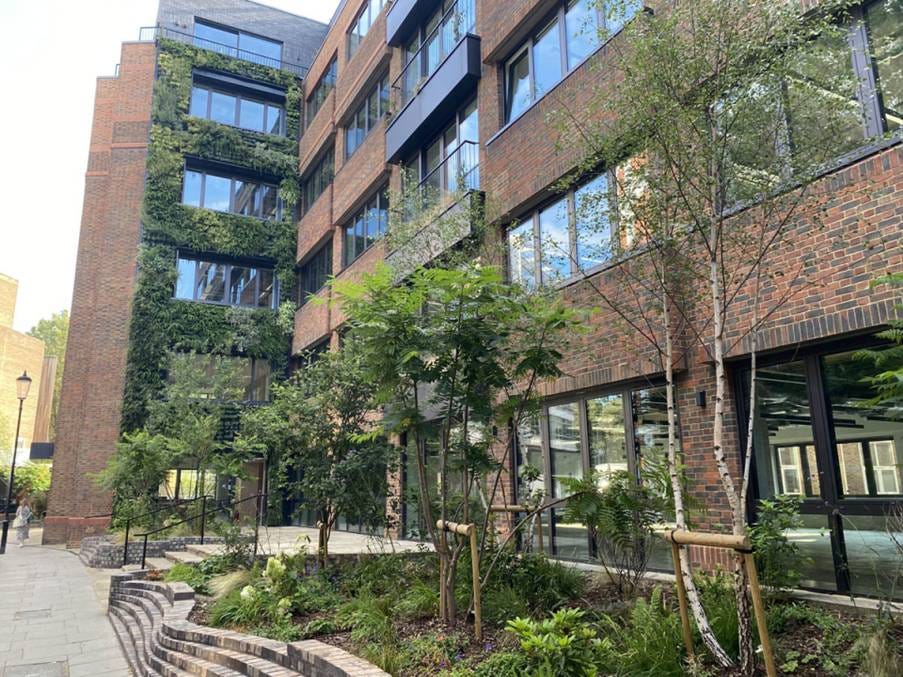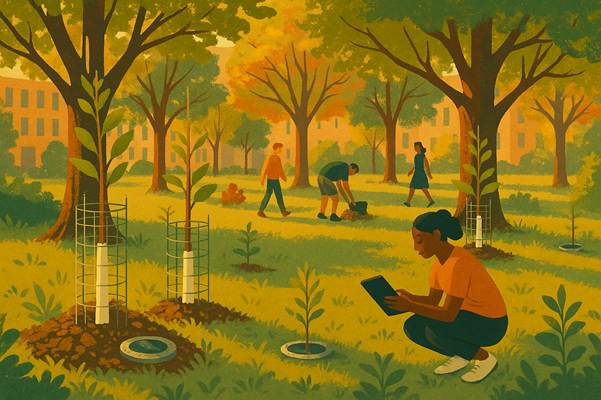Walking around cities like Singapore, Milan, Paris, or Berlin, you will see more and more buildings that feature a green façade – walls covered with plants. While in some cases, they are merely decorative or even artificial, many are genuine attempts to tackle urban challenges by incorporating more green into buildings. Let’s take a look at whether this can work!
Why cities are turning walls into gardens
In dense cities, ground-level gardens are a luxury. When horizontal space is scarce, architects and planners increasingly turn vertical, designing greening façades, walls, and rooftops to achieve benefits such as:
- Providing an extra layer of insulation
- Cooling homes in summer
- Diverting rainwater away from walls during storms
- Providing habitats for insects and pollinators
- Filtering urban air pollutants
- Reducing noise pollution
- Adding visual appeal and character
The Royal Horticultural Society notes that the simplest approach, direct greening, involves planting wall shrubs or climbers such as pyracantha or ceanothus. These can deliver many of the same benefits as more complex systems.
Indirect greening uses trellises, wires, or mesh, creating a small insulating gap between plants and the building. The most sophisticated option, living wall systems, mount pre-planted modules onto walls, complete with soil or growth media, irrigation, and drainage. These deliver high visual and ecological impact but require expert design, installation, and upkeep.

Case study: 7 Holbein Place, London
One of London’s most notable green façades adorns 7 Holbein Place, a redeveloped 1980s office transformed into a net-zero carbon workspace. At street level, vibrant planting spills from window boxes; high above, the rooftop blooms. Developer Grosvenor set out to enhance biodiversity, improve air quality, and boost thermal performance, earning BREEAM Outstanding and WELL Gold certifications along the way.
The building’s two living walls, designed with Barr Gazekas Architects, span 141 m² across north- and south-facing façades. Installation wasn’t easy:
“The Northside of the building faced onto Network Rail track lines which posed considerable H&S challenges during the installation of the living wall. There was a requirement for working between the hours of 1am – 5am when trains were not running and to keep noise to a minimum.”
Plant selection was equally complex, balancing the shady north with the sunny south: “With a shady North elevation and a sunny South facing elevation, our vertical garden plant choice was challenging as we had to have a plant topography and texture to trap PM 10’s as well as increasing biodiversity by way of pollinators.”
A microclimate and sunlight study guided the choice of 25 native UK wildflower species, selected with the support of the London Wildlife Trust to support pollinators by day and moths by night. The vertical meadows, alive with poppies, campions, cornflowers, and oxeye daisies, bring both ecological function and joy to the site. If you approach, you can actually hear the pollinators doing their work.
A closed-loop irrigation system recycles every drop of water, and even the planting mats are made from upcycled textiles. The result: improved air quality, moderated building temperatures, reduced noise, and a 200% net biodiversity gain. For these efforts, Holbein Place won CIRIA’s Construction Phase Biodiversity Award.

The costs of going green
Despite their promise, green façades remain rare, largely because of cost. High-quality systems demand regular watering, pruning, pest management, and structural inspections. These add significant long-term expense and time requirements.
There are also engineering constraints. Living walls add weight, requiring structural assessment and sometimes reinforcement. Even climate-appropriate species can have high water needs, making irrigation essential and complex. Poor drainage risks damaging both plants and buildings.
Effectiveness varies by plant type, local climate, and quality of upkeep. And while vertical greenery can’t match the cooling or ecological impact of large parks or street trees, it can play a valuable supporting role.
A piece of the sustainability puzzle
Quantifying the cooling or air-quality benefits of green façades is challenging; biodiversity gains and insulation effects are easier to measure. In most cities, vertical greenery is just one piece of a broader strategy that includes green roofs, urban trees, and accessible parks.
For developers with the resources, such as the team behind Holbein Place, living walls can deliver meaningful environmental, social, and aesthetic value. But as with all nature-based solutions, it is key key lies to match the right intervention to the right place and consider long-term care.
Tell me, do you have any urban green in your city that you find inspiring or surprising? Have you seen any green walls around?







